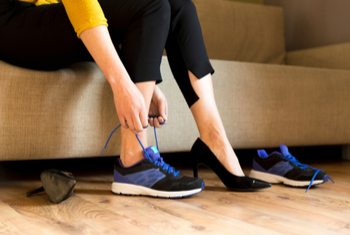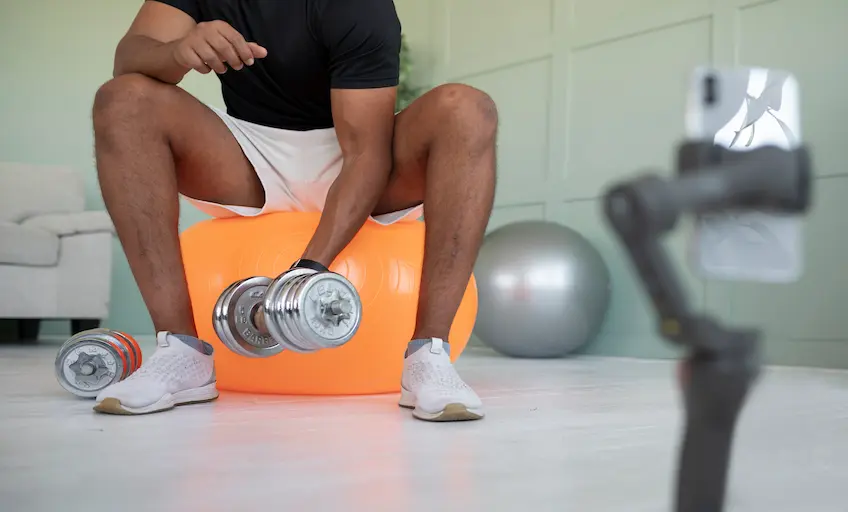
A lot of runners are recreational runners; some may be sedentary runners or even weekend warriors. All these terms vary in the attitude of the runner and also the time and effort put into the running. But the bottom line is that they all have day jobs and the running (whether it is daily or once a month) happens outside of the working hours. What is wonderful is that their bodies are getting the exercise that they need; however, attention must be paid to whether sitting all day in a poor posture is affecting your running in some way. If you don’t pay attention to this, you might be allowing yourself to short-change your performance or pick up several persisting injuries along the way. So seriously ask yourself- is my sitting killing my running?
The posture you adopt whilst at work can have significant effects on your muscle length and strength and can ultimately affect how you function and move when away from work. Read on to see how your day-to-day posture can affect your body position when running and what you can do to prevent negative impacts on your form.
Good posture can be thought of as when adjacent body parts are aligned in an anatomically ‘optimal’ position and bad posture when they are aligned away from the optimum. In order to understand ‘optimum’ think of a series of wooden blocks stacked one on top of each other. When they are positioned optimally, and each block is perfectly aligned with its neighbor, it is possible to build a tall and stable tower of blocks. The further away from this optimum position the blocks are stacked, the more prone the tower is to become unstable and potentially fall over. For example, ankle weakness and over-pronation of the foot can lead to compensatory rotations in the tibia that have a knock-on effect to the knee, hip, and spine; likewise, a forward head posture can lead to rounding of the shoulders and curving of the spine.
Although all runners are different it is generally accepted that optimal alignment when running will reduce the risk of injury and maximize efficiency. Naturally, there are exceptions to this rule, where runners manage to be extremely efficient despite outrageous body positioning but generally greatest efficiency and reduced injury risk are attained by sticking to the optimal alignment.
So how does all of this relate to your posture at work?
Work posture affects your running posture because your body will always try and adapt to the demands placed upon it. To understand this better, think about how your body responds to training. As a runner, every time you train your neural, muscular and skeletal systems adapt to the type of training you do. If you do more long slow running, your body will get better at long slow running; if you do more fast short running you will get better at shorter faster events. Your body will adapt to the loads placed upon it; therefore, when a large percentage of your waking time is spent seated, your body will adapt to being seated. Some of the postural adaptations resulting from daily work habits become permanent adaptations that stay with you when you are running.
Unfortunately, some of these acquired postures are not conducive to optimal running alignment. The good news is that being more aware of what these postures are and the negative impact they can have on your running, makes it easier to identify and adopt strategies to prevent your desk job from killing your running.
Below are the 3 Examples of How Sitting Affects Posture
Forward Head Posture/Rounded Shoulders
Workplace Causes: Habitually adopting a slouched position – commonly when using a computer.
Effect on running: A forward head posture and rounded shoulders stay with you away from the desk. When you run with this type of posture your arms tend to swing more across the body, your pectoral muscles become tight reducing expansion of the ribs, and other parts of the spine curve to compensate for the imbalance caused by the head being forward. All of this can lead to inefficiency and injury.
Solution: Set up your workstation so that it is easy to sit well with shoulders back and neck straight- think ears over shoulders! Get up from your seat regularly and stretch your shoulder blades backward and tuck your chin downwards.
Poor Achilles Tendon Length
Workplace Causes: Wear shoes with a raised heel (not just for the ladies – many men’s shoes will have a 2cm raise).
Effect on running: Habitually working the calf muscle in a short position can lead to calf tightness and a reduction in the ankle range of motion. The effects of this can be far-reaching, leading to compensatory movements such as excessive pronation of the foot and tibial rotation. Injuries like Achilles tendinopathy, plantar fasciitis, and knee pain can crop up.
Solution: Wear shoes with a minimal differential between heel and toe height (drop). Regularly get out of your heeled shoes and stretch your calf muscles.
Poor Hamstrings Length
Workplace causes: Prolonged sitting with knees bent. This places your hamstrings in a shortened position which makes them tight. The longer you sit the tighter they get.
Effect on running: For striding while running, decent hamstring length is important else there is a lot of sheer at the knee. This may lead to knee pain or ITB syndrome due to compensatory mechanisms forming.
Solution: Stretch your hamstrings daily even on non-running days and take a quick standing/walking break every hour at work.
Taking care of your body when you are at work can be beneficial to your running and can reduce your likelihood of injury. So follow these tips and don’t let your work posture kill your running.





 1800-270-7000
1800-270-7000








The article is good. The article asks a question, is your running performance affected by how you sit all day. According to the article, ‘The posture you adopt whilst at work can have significant effects on your muscle length and strength and can ultimately affect how you function and move when away from work’. Reading the article will help you to understand how your day-to-day posture can have an effect on your body position when running and what you can do to check negative impacts.
I totally agree with you that activity is so important for our health. Running is useful for our health and body. Also, it’s a good idea for making the mood better. As well, I read an interesting article about this.
nice post i like it